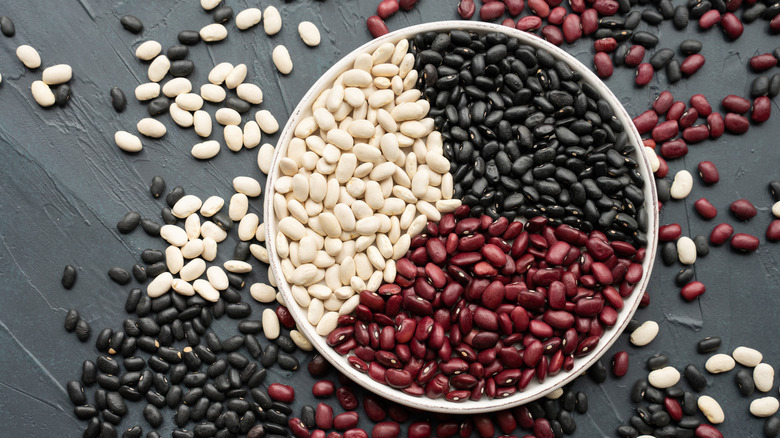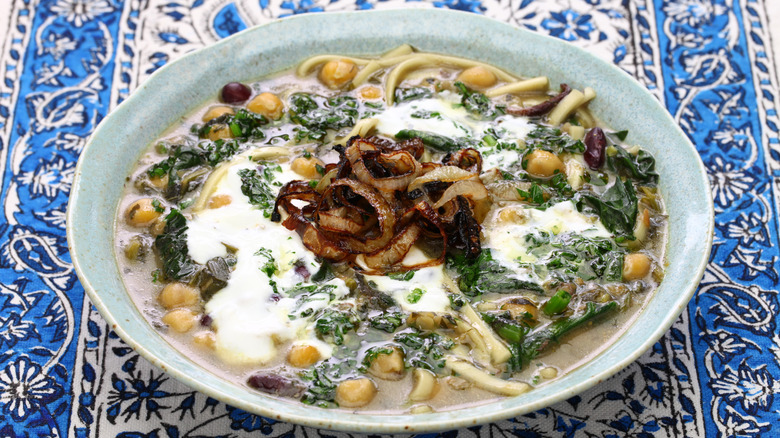Why We Eat Beans During Purim
Nearly all customs and traditions, particularly if they are tied to a religion, start with a story, and Purim — also known as the Feast of Lots — is no different. And while the famed hamantaschen pastries take center stage during this joyful holiday, another ingredient cooked in a variety of ways is widely consumed during Purim, too.
Beans are a mainstay of every meal during this particular festive season, because Queen Esther, whose intervention saved the Jews in Persia from slaughter in 4th century BCE, could not reveal to her new husband or to his people that she herself was a Jew. So to ensure that she could continue to keep kosher, she became a vegetarian (via The Spruce Eats), and it is said that she consumed nuts, seeds, and legumes as well as grains during this time. The practice of consuming seeds during this period even extends to the sweet hamantaschen, since it can be filled with mohn, which is made with poppy seeds.
Beans and other pulses figure prominently in religious writings
It is not unusual for Queen Esther to lean into the idea of consuming the ancient version of a plant-based diet, because as Jewish Food Experience points out, legumes — which include the pulses beans and lentils, have been a dietary mainstay for Jewish and Middle Eastern cuisines. There are even references to consuming pulses in other parts of the Bible, notably in The Book of Daniel, where Daniel and his group lived on pulses and water over a 10-day period while they were being held captive. And while turkey is not exactly vegetarian fare, it also finds its way onto a Purim table, as a symbol of the expanse of Esther's husband King Ahasuerus' empire (via The Spruce Eats).
There is no particular way legumes need to be served in order to adhere to traditions as dictated by Purim. My Jewish Learning even suggests that "salted beans boiled in their jackets, and chickpeas boiled and seasoned with salt and pepper" can be consumed. But in the spirit of the festival and where it originated from, we don't think you'd be amiss in creating a feast of Persian flavors, where lentils and beans figure prominently, as a toast to the brave queen whose actions saved her people, making the holiday possible.

